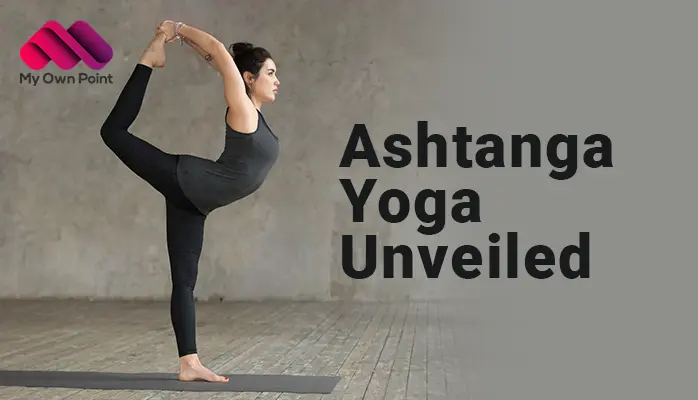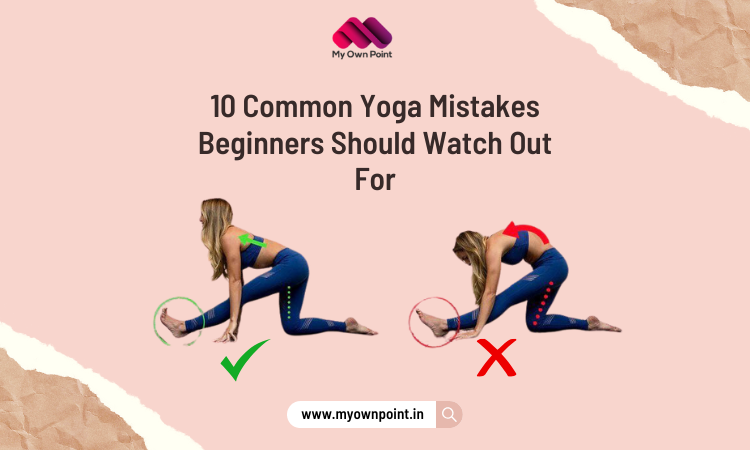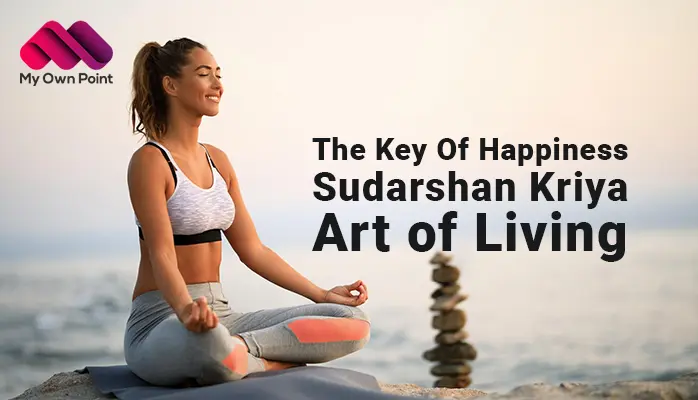Summary: Are you curious to know what Ashtanga yoga is? If you want to see, you should know first that it’s not just about exercise but a transformative journey that strengthens the body. It can also lead to increased physical vitality, mental focus, and a deep sense of inner balance.
What is Ashtanga yoga? History and Origins
Ashtanga Yoga has its roots in ancient Indian philosophy and tradition. Sri K. Pattabhi Jois, a yoga teacher from Mysore, India, systematized and popularised the practice. He learned this system from his guru T. Krishnamacharya, who was influenced by ancient yoga texts such as the Yoga Korunta, a manuscript that has since been lost. It is often called “Yoga of the Eight Limbs,” a dynamic and comprehensive system that harmoniously combines postures, breath control, and meditation. The exercise follows a specific sequence of postures divided into different series, each building on the previous one.
Also Read: Pilates vs. Yoga: Which is More Effective for Weight Loss?
Philosophical Foundations
Ashtanga Yoga is based on the philosophical teachings of Patanjali’s Yoga Sutras, which provide a comprehensive framework for spiritual development and self-realization. As mentioned earlier, the 8 Limbs of Yoga form the core of this philosophy and guide the practitioner toward holistic well-being and enlightenment.
The 8 Limbs of Ashtanga Yoga: Practice Methodology
1- Yama (Ethical Guidelines)
Yama refers to the ethical principles of moral and ethical principles that guide how we interact with the external world. These principles create a foundation for harmonious living and conscious behavior:
- Ahimsa (Non-violence): Practising compassion and non-harming towards oneself and others in thoughts, words, and actions.
- Satya (Truthfulness): Cultivating honesty and truthfulness in all aspects of life, embracing integrity and authenticity.
- Asteya (Non-stealing): Respecting others’ belongings, thoughts, and time and avoiding any form of stealing.
- Brahmacharya (Moderation): Exercising self-control and moderation in all areas of life, including desires and sensory experiences.
- Aparigraha (Non-possessiveness): Letting go of possessiveness and attachment to material possessions, fostering contentment.
2. Niyama (Personal Disciplines)
Niyama represents personal disciplines that help shape an individual’s character and inner growth:
- Saucha (Cleanliness) cultivates physical, mental, and emotional purity, including body, mind, and environment.
- Santosha (Contentment) finds contentment and gratitude in the present moment, regardless of external circumstances.
- Tapas (Austerity) embraces self-discipline, determination, and effort to overcome obstacles and challenges.
- Svadhyaya (Self-study) engages in self-reflection, introspection, and the study of spiritual texts to deepen self-awareness.
- Ishvara Pranidhana (Devotion to a Higher Power) surrendering to a higher purpose or divine presence, cultivating humility and trust.
Also Read: Discover 10 Best Belly Fat Burning Juice Recipes
3. Asana (Physical Postures)
Asanas are the physical postures practiced in yoga. These postures help maintain physical health, balance, and flexibility. They also prepare the body for meditation and deeper states of consciousness.
4. Pranayama (Breath Control)
Pranayama involves regulating and controlling the breath to enhance the flow of prana (life force energy) within the body. It balances the nervous system, calms the mind, and prepares the practitioner for meditation.
5. Pratyahara (Withdrawal of the Senses)
Pratyahara involves turning the senses inward and withdrawing attention from external distractions. This practice prepares the mind for deeper concentration and meditation.
6. Dharana (Concentration)
The practice of focused concentration is where the practitioner directs their attention to a single point or object. This steady concentration prepares the mind for deeper stages of meditation.
7. Dhyana (Meditation)
It is sustained meditation, where the practitioner’s mind is absorbed in the chosen point of focus. The practitioner experiences a deep sense of connection and unity in this state.
8. Samadhi (Union)
It is the ultimate state of yoga, where the practitioner experiences oneness with the universe, transcending the boundaries of the self. It is a state of profound inner peace, bliss, and realization.
Also Read: Lose Weight in 15 Days With Jeera Water
Benefits of Ashtanga Yoga
- Physical Fitness: The practice promotes strength, flexibility, and balance. The dynamic nature of Ashtanga Yoga increases cardiovascular fitness and endurance.
- Mental Clarity: Focusing on breath and movement cultivates concentration and presence, enhancing mental clarity and focus.
- Stress Reduction: The meditative aspect of the practice, combined with physical exertion, helps reduce stress and anxiety.
- Self-Discipline: The structured sequence and commitment to regular practice instill self-discipline and dedication.
- Body-Mind Connection: Ashtanga Yoga encourages the integration of body, breath, and mind, fostering a deeper understanding of one’s being.
Also Read: Top 5 Reasons to Try Peptide Serums For Skin
The Position of Ashtanga Yoga
The yoga poses practice begins with the Primary Series (Yoga Chikitsa) and progresses to more advanced levels, such as the Intermediate Series (Nadi Shodhana) and the Advanced Series (Sthira Bhaga). Let’s delve into the details of the Primary Series:
1- Primary Series (Yoga Chikitsa)
The Primary Series is designed to cleanse and purify the body, build strength, and establish a solid foundation for the practice. It focuses on forward bends, hip openers, and twists. Each pose prepares the body for the subsequent ones, creating a gradual progression of intensity.
2- Sun Salutations (Surya Namaskar)
Practitioners often commence with the invigorating Sun Salutations (Surya Namaskar A and B). These sequences warm the body, harmonize breath with movement, and create a seamless flow between poses.
2. Standing Poses
- Padangusthasana (Big Toe Pose) and Padahastasana (Hand-to-Foot Pose): Forward bends that stretch the hamstrings and lengthen the spine.
- Utthita Trikonasana (Extended Triangle Pose) and Parivrtta Trikonasana (Revolved Triangle Pose): Standing poses that open the hips and stretch the sides of the body.
- Utthita Parsvakonasana (Extended Side Angle Pose): Deep hip opener and side stretch.
- Prasarita Padottanasana (Wide-Legged Forward Bend): Intense hamstring and inner thigh stretch.
3. Seated Poses
- Paschimottanasana (Seated Forward Bend): Deep hamstring and spinal stretch.
- Purvottanasana (Upward Plank Pose): Strengthens the arms, shoulders, and back.
- Ardha Baddha Padma Paschimottanasana (Half-Bound Lotus Forward Bend): Forward bend with hip opener and twist.
- Tiring Mukha Eka Pada Paschimottanasana (Three-Limbed Forward Bend): Forward bend with one leg extended and one leg in Half-Lotus.
- Janu Sirsasana (Head-to-Knee Pose): Hamstring and hip stretch.
- Marichyasana A, B, C, D (Seated Twists and Binds): Deep-seated twists with various arm binds.
- Navasana (Boat Pose): Strengthens the core and hip flexors.
Also Read: Try Power Yoga to Lose Weight in 7 Days – A Comprehensive Guide
4. Finishing Poses
- Bhujangasana (Cobra Pose): Backbend that opens the chest and strengthens the back.
- Salabhasana (Locust Pose): Strengthens the back muscles and improves posture.
- Dhanurasana (Bow Pose): Deep backbend that stretches the front of the body.
- Ustrasana (Camel Pose): Opens the chest and shoulders while stretching the front of the body.
- Paschimottanasana (Seated Forward Bend): Revisited for a deeper stretch after the backbends.
- Purvottanasana (Upward Plank Pose): Revisited as part of the finishing sequence.
- Ardha Baddha Padma Paschimottanasana (Half-Bound Lotus Forward Bend): Revisited on the opposite side.
- Triang Mukhaikapada Paschimottanasana (Three-Limbed Forward Bend): Revisited on the opposite side.
- Supta Padangusthasana (Reclining Hand-to-Big-Toe Pose): Deep hamstring and hip stretch.
- Ubhaya Padangusthasana (Both Big Toes Pose): Deep hamstring and hip stretch with both legs extended.
- Urdhva Mukha Paschimottanasana (Upward-Facing Intense Stretch Pose): Deep forward bend with an upward gaze.
- Setu Bandhasana (Bridge Pose): Backbend that opens the chest and hips.
- Finishing Inversions: Sarvangasana (Shoulderstand) and Halasana (Plow Pose) to calm and rejuvenate the nervous system.
- Salamba Sirsasana (Headstand): Deep inversion that requires balance and strength.
- Salamba Sarvangasana (Supported Shoulderstand): Followed by Karnapidasana (Ear Pressure Pose).
Conclusion
Ashtanga Yoga is a comprehensive discipline integrating body, mind, and spirit to promote well-being. It is an enlightening expedition toward self-realization and tranquillity by prioritizing self-control, concentrated training, and harmonizing the physical and mental aspects. Please note that the given style of yoga is described as the physical practice intended for experienced practitioners. If you are a beginner yogi, talk to your yoga teacher about your well-being and experience before starting the class.





